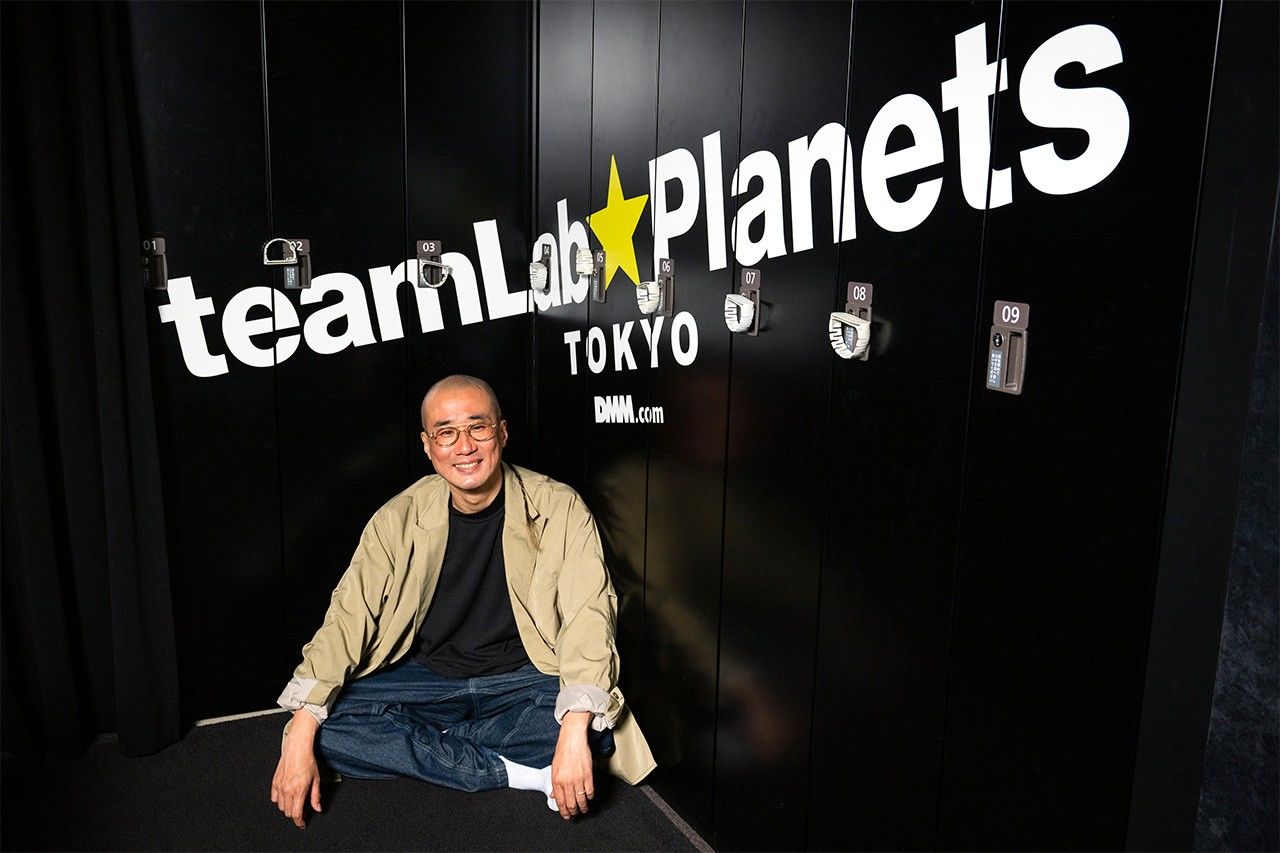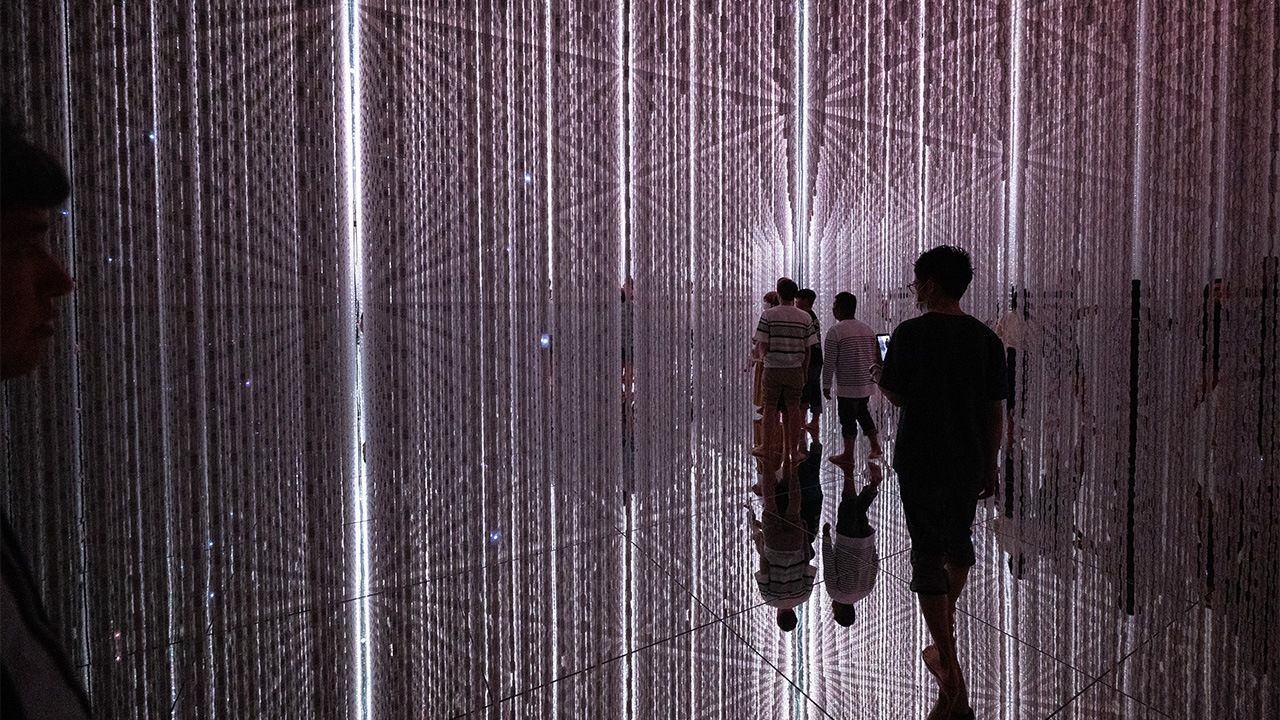
TeamLab Planets Creates a Borderless World of Art and Science
Culture Art Guide to Japan- English
- 日本語
- 简体字
- 繁體字
- Français
- Español
- العربية
- Русский
Art Through Technology
The day I visited the TeamLab Planets museum in Toyosu, Tokyo, it was filled with voices from around the world.
One in ten of all the international visitors coming to Japan is said to make a stop at the museum. Since its 2018 opening, it has attracted countless VIPs, including former US President Barack Obama and tech entrepreneur Elon Musk.

Visitors wait eagerly in line outside. (© Yokozeki Kazuhiro)
What attracts these visitors like the pull of gravity is an utterly unique experience of fully immersive art. The grounds cover a sweeping 10,000 square meters. The museum has two gardens and four massive art installations that turn the whole of their spaces into artwork.
Within those spaces, digital artwork is on display in all directions. Visitors go barefoot inside and enjoy a sense of total immersion complete with scent and majestic music.
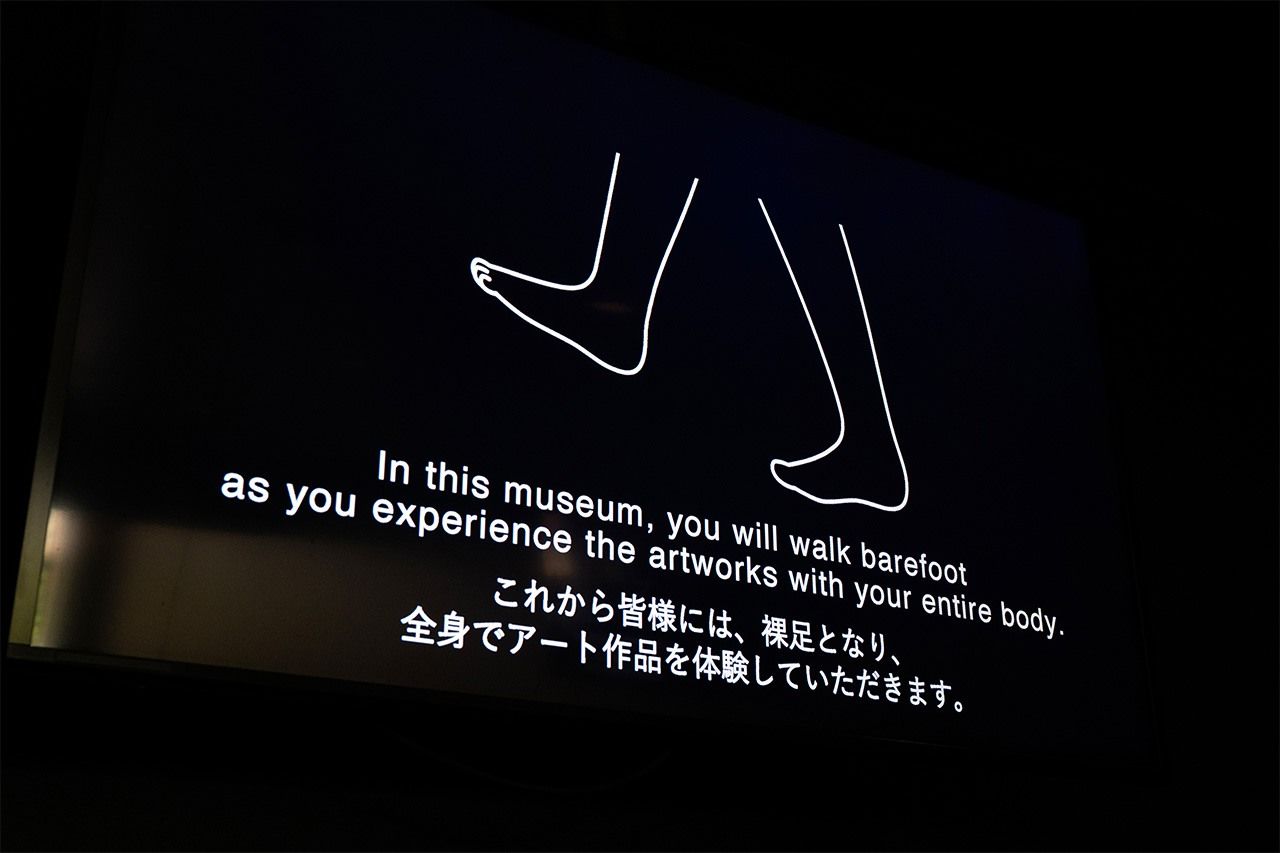
Going barefoot in an art museum is a fresh experience for many. (© Yokozeki Kazuhiro)
Immersive Experiences
There are 11 immersive experiences, with each work differing in its approach.
One, with the extraordinary name “Expanding Three-Dimensional Existence in Transforming Space—Flattening 3 Colors and 9 Blurred Colors, Free Floating,” is a space filled with glowing spheres. Visitors push through the spheres as they enter, and each one resonates with sound and changes colors when touched. This reaction radiates through the neighboring spheres, so the changes spread in ripples.
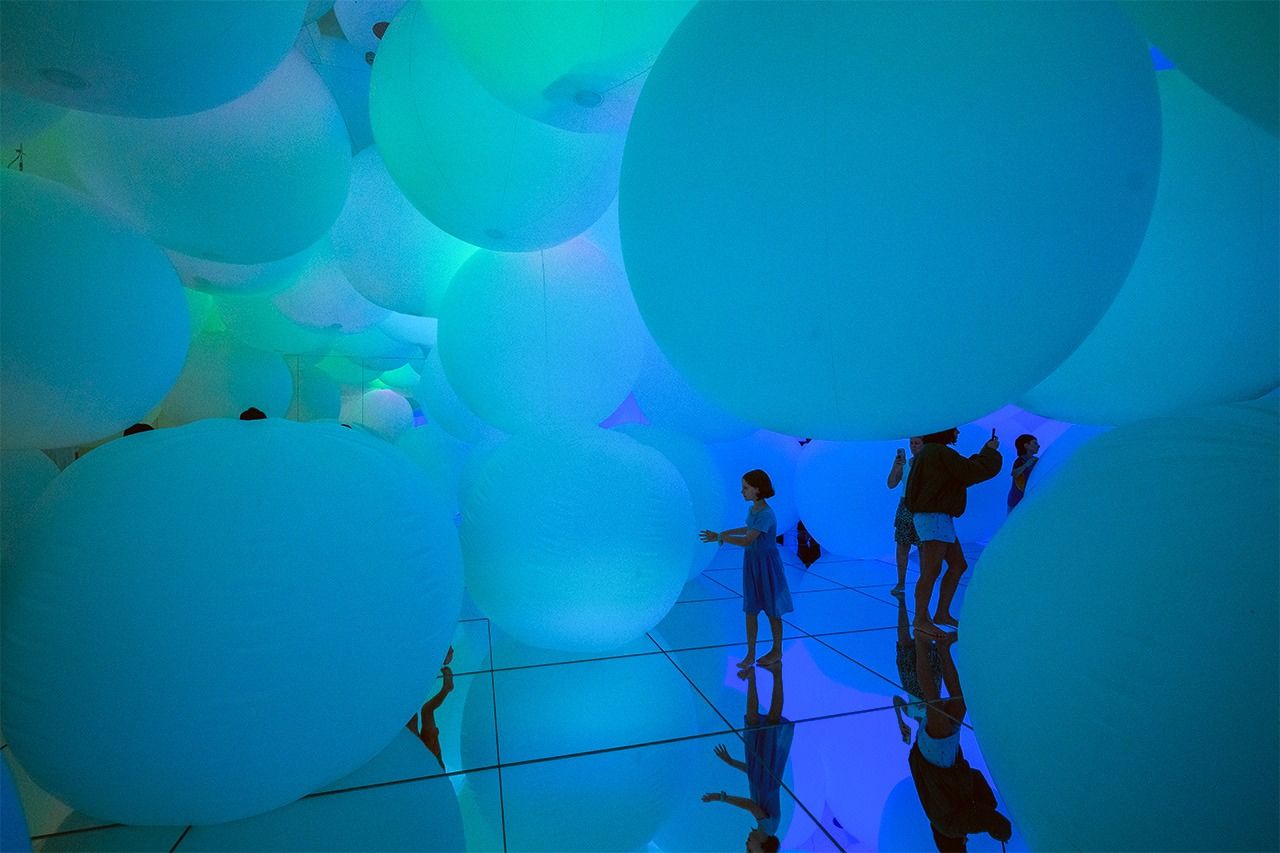
Viewing the art, or being drawn inside? (© Yokozeki Kazuhiro)
After a period of fluctuation, they return to their original hue. The work seems to transition between two and three dimensions as the colors change.
Meanwhile, “Floating in the Falling Universe of Flowers” pulls the viewer in through visuals alone. The space is inside a dome, the entire surface of which shows flowers growing, blossoming, dropping petals, and wilting away. From time to time, they move at high speed, transforming as they go. Watching while laying or sitting in the middle of the space creates a sensation of floating in, and unity with, that microcosm.
In “Drawing on the Water Surface Created by the Dance of Koi and People—Infinity,” visitors walk barefoot through a very shallow pool of water. Multicolored koi displayed on the surface swim around. When one of these fish collides with a visitor, it transforms into a flower. At other times, the koi swirl around the visitors and leave trails of color on the water.
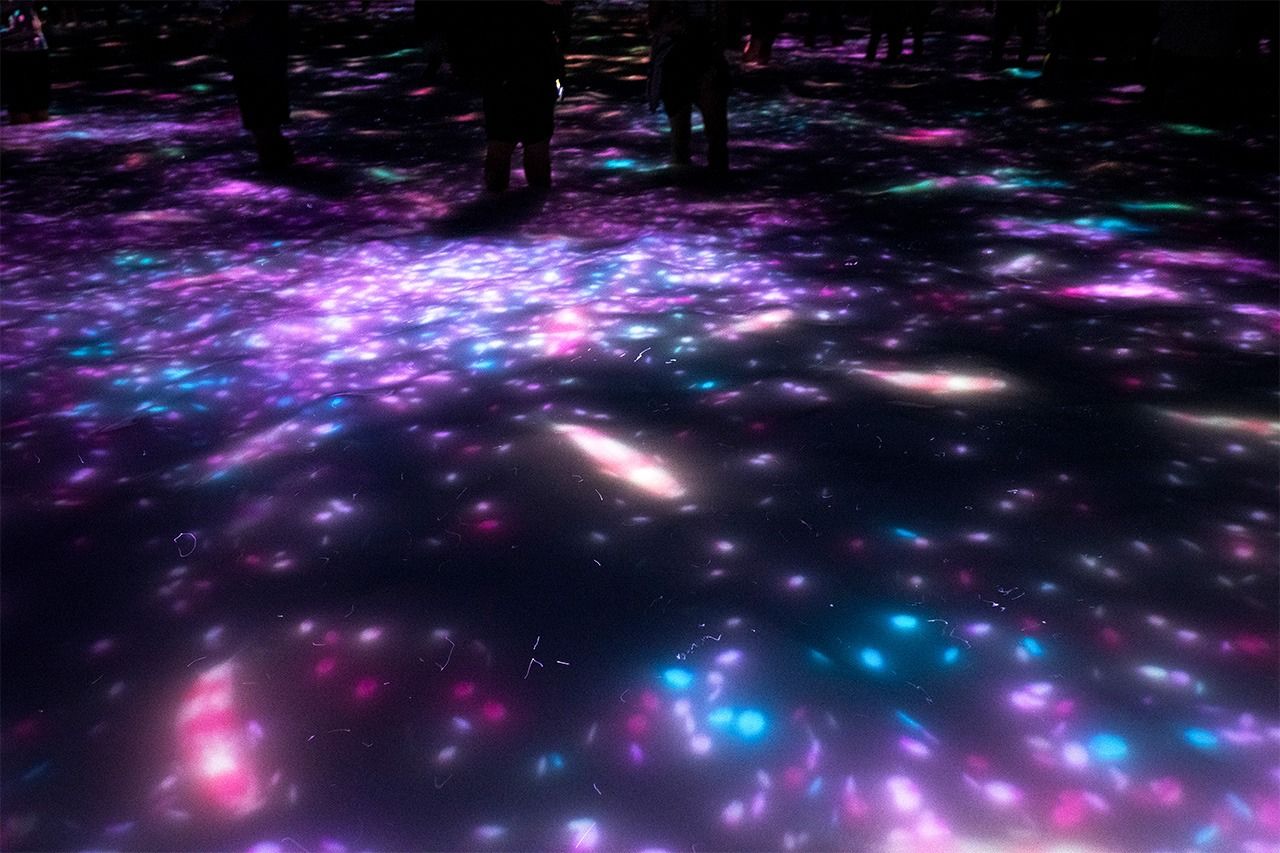
The work is one of infinite variety as it transforms moment to moment with each person walking in a new way. (© Yokozeki Kazuhiro)
In this work, visitors’ own presence, and that of others, creates a singular drawing that seems to transform moment to moment, blurring the borders between the self and the artwork, and between the self and others.
“Soft Black Hole—Your Body Becomes a Space That Influences Another Body” has a soft floor where visitors sink in as they walk, exciting the senses. “Floating Flower Garden: Flowers and I Are of the Same Root, the Garden and I Are One” fills the space with the aroma of real orchids. “The Infinite Crystal Universe” takes visitors inside a sculpture made of points of light.
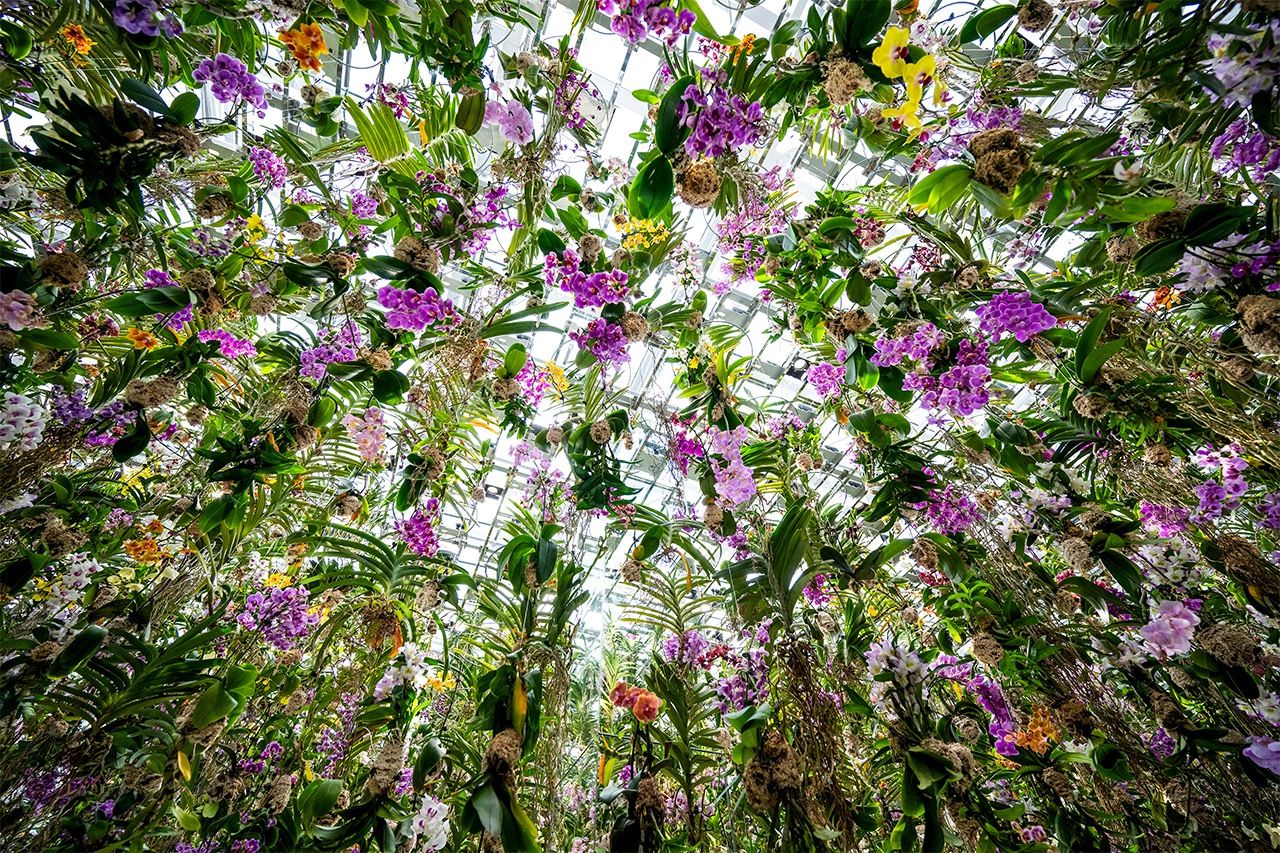
Countless orchids blossom, filling the space with the aroma of flowers. (© Yokozeki Kazuhiro)
A Remedy for Television’s Distance
TeamLab began creating these works in pursuit of “a borderless world.” Pulling visitors into the works is an attempt to shake the sense that there are borders between the self, artworks, and the world.
For example, there is no clear border between the earth and outer space. Rather, humanity has the misconception that the earth stands apart simply because we perceive it as separate through our language and logic.
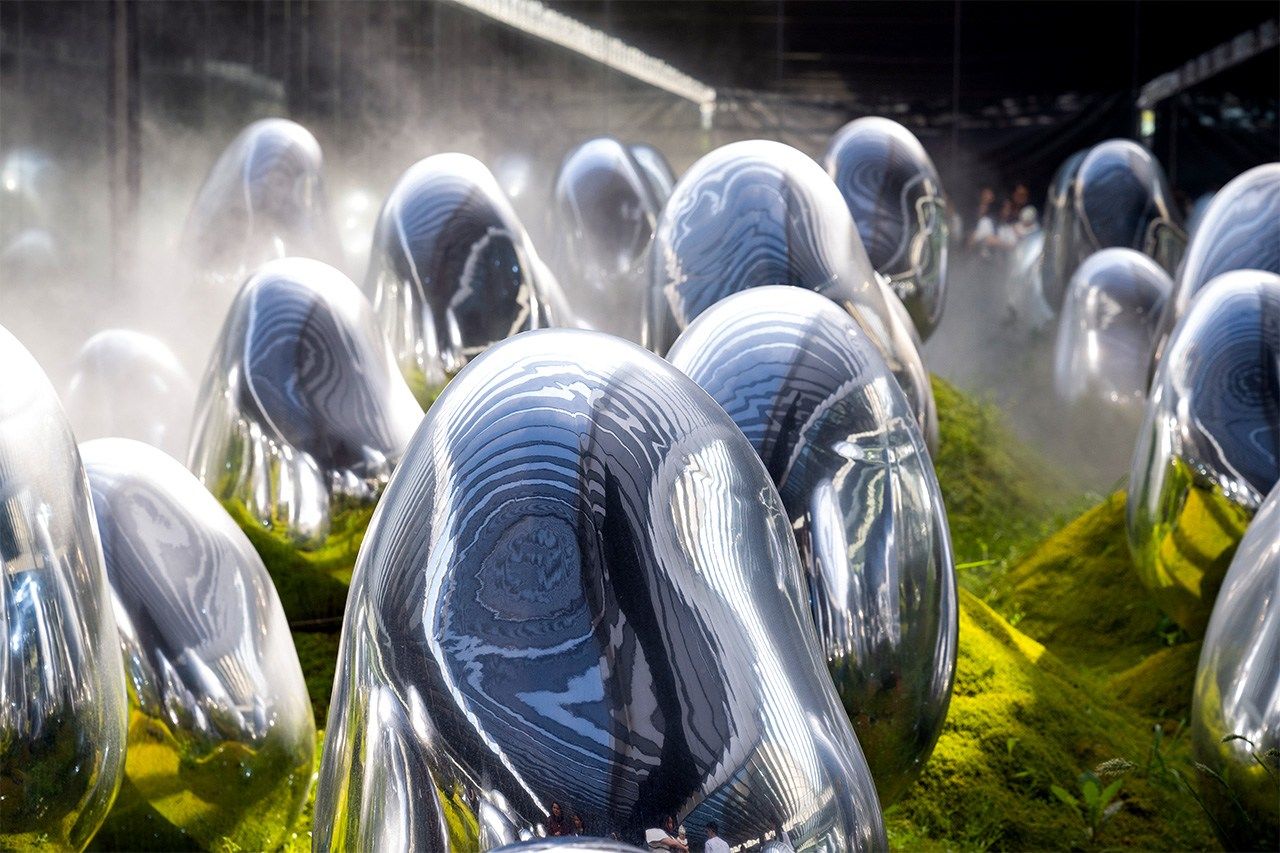
A microcosmos of moss (© Yokozeki Kazuhiro)
The great goal of creativity is to make people rethink the shape of the world we have fixed inside our heads, and show that it is part of something connected, without borders. That is what TeamLab representative Inoko Toshiyuki has been focusing on for most of his life.
When we watch television, the world shown on the screen often seems set apart from the world we inhabit, so there is no sense of connection. Inoko felt that himself as a high school student, even when it came to photographs of natural scenery like forests and mountains. What he saw in the pictures was so different from the scenery he experienced himself that he began to question the validity of experiences through those media. In his book, Jinrui o mae ni susumetai: Chīmu Labo to kyōkai no nai sekai (Moving Humanity Forward: TeamLab and a World without Borders), Inoko writes “Why is it that when we divide the world up through the lens, the image creates a sense of there being two different worlds, with the image as a border between us and ‘the world on the other side’?” That question spurred Inoko to begin investigating how to divide space in other ways.
Teaming Up with University Friends
Inoko graduated from the University of Tokyo School of Engineering in 2001 and soon formed TeamLab with university and childhood friends. While they started out working in IT solutions like web design and app development, the team was at heart one of artists, programmers, and engineers, and they soon started creating artworks using digital technology.
After searching for original means of expression in their creation, they finally succeeded in making works that broke down the borders between the world where the audience exists and the works themselves.
The first work was spotted by contemporary artist Murakami Takashi, who visited the office through a friend’s introduction. He told them they should share it with the world. In 2011, TeamLab had its first exhibition at Murakami’s Kaikai Kiki Gallery, in Taiwan. In the blink of an eye, TeamLab’s work spread around the world.
TeamLab member Kudō Takashi describes how they seek to convey their ideas through the work:
“There are moments when you feel connected to nature, like when you see a rainbow, and isn’t that what people perceive as beauty? I think the instant when we feel as one with the world as it exists is when we can first understand that the world is beautiful and beloved. TeamLab is expressing that sense of a ‘borderless world.’”
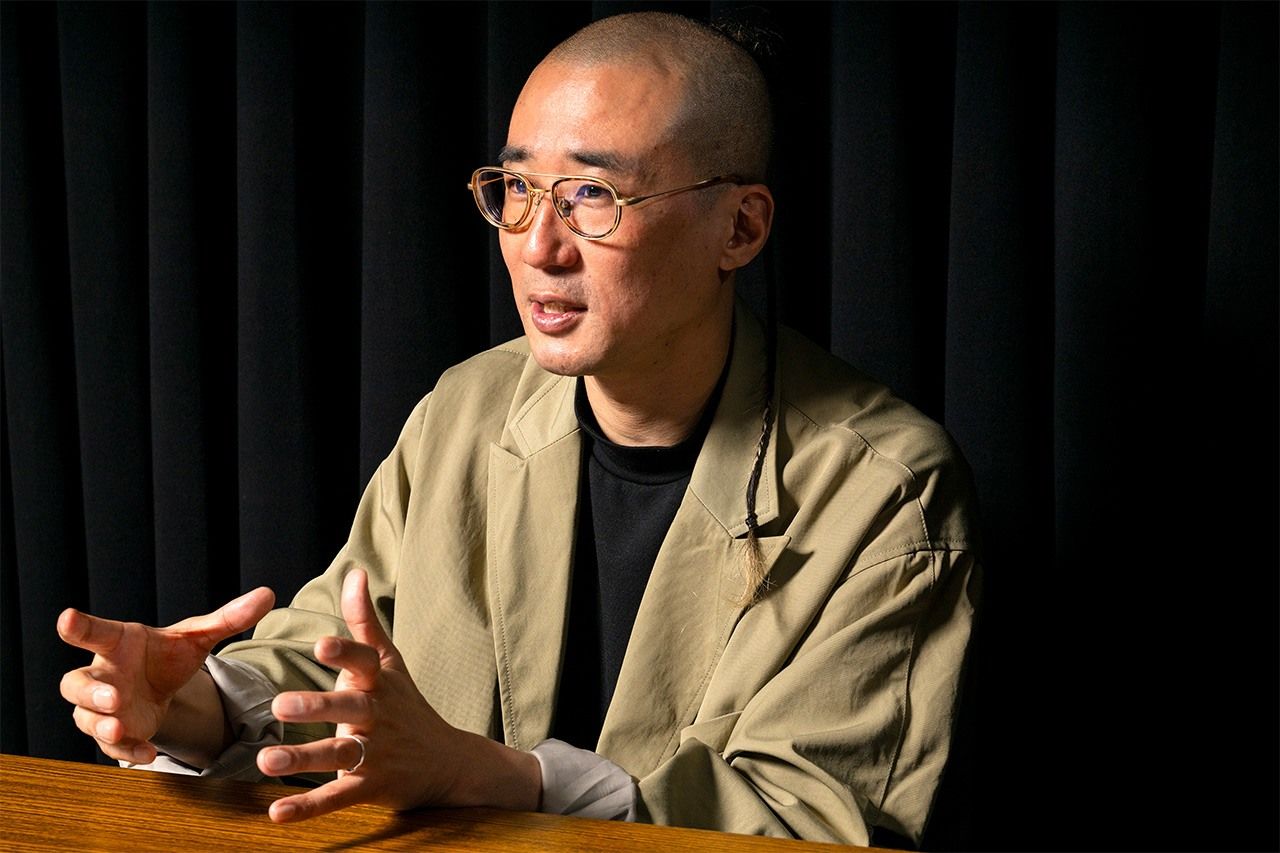
Kudō Takashi (© Yokozeki Kazuhiro)
Inoko and TeamLab share a belief that what is seen as “strong individuality” is actually generated by chance within a series or gathering of minutiae, and that itself is beauty. The team expresses this unique worldview in its art.
A Single Message
Among the innumerable works displayed in Japan and around the world, the team currently has a few large-scale exhibits. In Tokyo there is TeamLab Planets and TeamLab Borderless, which moved from Odaiba to Azabudai Hills in February. There are also installations in Osaka, Macau, Beijing, Singapore, and Jeddah, Saudi Arabia.
In May, the team had an exhibition at New York’s Pace Gallery, and work will begin this year on TeamLab Phenomena Abu Dhabi, which will be a massive museum covering 17,000 square meters.
The pieces among those exhibits include some using monitors for two-dimensional images, like “Life Survives by the Power of Life,” which appeared at their first show, all the way to massive pieces that fill space in three dimensions. The concepts also branch and evolve ceaselessly as the pieces explore the borders between self and artwork and between artworks, as well as the relationships between people, and the coordination of time.
But, in the end, as Kudō says, “At their root, TeamLab’s creations have never changed. We simply carry on creating what we believe is beautiful, a ‘borderless world.’ Here at TeamLab Planets, we want people to experience our work and feel their emotions moved, and to bring something powerful to the senses of each viewer. We hope you come and experience for yourself.”
TeamLab’s project is to explore how they can best construct a world of unique beauty.
(Originally published in Japanese. Banner photo: The Infinite Crystal Universe. Interview and text by Sugihara Yuka and Power News. Photos © Yokozeki Kazuhiro.)

